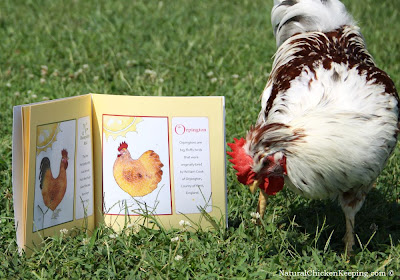At first you think your hens aren't laying like they used to. Fewer and fewer eggs appear in the nest box. And then one day you decide to clean up that thicket of an herb garden in the back corner of your yard, and lo and behold... EGGS! Yup - your silly girls apparently decided amongst themselves that your life was getting too boring and thought they'd liven it up with a bit of a "treasure" hunt. (Wish they'd let you know about the game a bit earlier, right?)
And now here you are with 20+ eggs of unknown age. But don't toss them just yet! There is actually a way to know if some of your discovered "treasure" is edible (provided there was no broody hen trying to incubate said treasure). If there was a broody involved for any length of time, toss them... unless they are fertile and you want to hatch them, of course.
Anyhoo - to test eggs for freshness, do the float test. The basic rule of thumb is the fresher the egg is, the more of the egg will touch the bottom of the glass or bowl.




And most of all, use your common sense.And now here you are with 20+ eggs of unknown age. But don't toss them just yet! There is actually a way to know if some of your discovered "treasure" is edible (provided there was no broody hen trying to incubate said treasure). If there was a broody involved for any length of time, toss them... unless they are fertile and you want to hatch them, of course.
Anyhoo - to test eggs for freshness, do the float test. The basic rule of thumb is the fresher the egg is, the more of the egg will touch the bottom of the glass or bowl.

Ewww... a floater!

Don't eat an egg that floats. They are no good!

Though it is hard to tell from the photo, this egg is standing on its small end with the larger end up. The egg may be a week or two old, but is still fairly fresh.

This egg is laying on its side. This egg was laid recently and should be very fresh.
*It should be noted that the float test can only help determine the approximate age of an egg. It can not tell you if the egg carries salmonella or is otherwise compromised from a health-safety standpoint. If the eggs were laid by your own hens, are fairly fresh and were not exposed to weather extremes, it is likely they are fine to eat.
Don't eat eggs that:
- Have been exposed to high temperatures or direct sunlight for prolonged periods of time.
- Have an unpleasant odor.
- May have been incubated by a broody.
- Were laid by a bird that shows signs of sickness.
Happy hunting!
*





















 Holes
Holes She's dangerous - she could hurt you."
She's dangerous - she could hurt you." and on the third day she adopted our autistic daughter.
and on the third day she adopted our autistic daughter. And then another child was born,
And then another child was born, kicking
kicking would risk that dog, those teeth
would risk that dog, those teeth And looking back I see
And looking back I see












